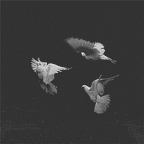A post-class meeting
So after the class presented our work to the tutors we were faced with criticism on our work and designs. This lead to the head honcho Nissie to call for a group meeting post class. It was clear that there had to be some changes made to many aspects of this project. As a group we discussed what the tutors thought were good ideas to build on and some things we needed to maybe drop and move on from. One of the ideas that was dropped was the linearity of the pavilion design. Originally, we held onto an idea of controlling the users of the space to go through the different stages in a particular order. As a group we reflected on that and decided it would be too restricting and could potentially deter people from the pavilion.
An idea was to create a more open spaced plan with keywords to follow being:
- Free Exploration
- Communal Exploration
we agreed that this would be a better experience for the pavilion, having user choice and freedom.
Further discussion lead to the activities within the pavilion and minimum spaces required and other requirements
I found out that AR needs space. A lot of space. From what I heard, the Hololens requires a certain distance for it to work, so the more space the better. There was also discussion whether Nariddh’s breathing idea (will discuss this further down) would affect the spatial scanning of the Hololens, so that particular feature won't be applied to the AR space. There also needs to be a wall/surface for the Hololens to track and a pick-up/dump station for the headset. VR on the other hand had fairly straight forward requirements, a set 3x3m area with maybe some requirements of seating. it was agreed that we would need as much headroom as we can get since all the activities would be better off with it, a minimum of 4M
Now onto Narridh’s “breathe” idea. I don’t really know specifics (maybe the iot group could elaborate on this) but the general idea is to give the illusion that the Pavilion is living and breathing by using electric motors/actuators to loosen and tighten the skin of the structure.
all in all, our new designs always need to be asked the simple question:
all aspects of the design need to have some form of justification, and a reason for why it is the way it is…
